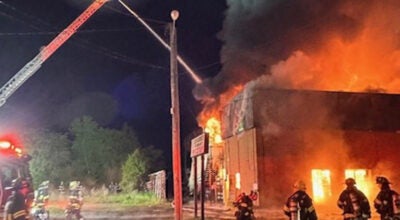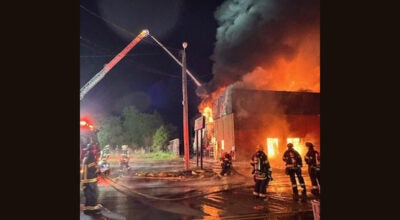Intersection project discussed
Published 10:43 pm Tuesday, February 12, 2019
Concerns about traffic and future development were among the main concerns of the more than 200 people who turned out to a design public hearing Tuesday on proposed intersection work at Shoulders Hill and Bridge roads.
The hearing, held at Creekside Elementary School just over a mile from where the work would take place, gave residents the opportunity to ask questions of Suffolk city officials and weigh in with comments or concerns about the project.
The traffic count on westbound Bridge Road is currently about 35,000 vehicles per day. Shoulders Hill Road at that intersection has about 17,000 vehicles go through it daily. By 2042, city officials estimate traffic could almost double on Bridge Road and increase by about 50 percent on Shoulders Hill Road.
The improvements include:
4Expanding existing travel lanes on Bridge Road from two to three lanes, which will revert to two lanes at both ends of the project
4adding an additional turn lane to the two left-turn lanes from westbound Bridge Road to southbound Shoulders Hill Road
4Expanding southbound Shoulders Hill Road from one to two through lanes, with a right turn into the existing shopping center
4Adding a through lane on northbound Shoulders Hill Road to Knotts Neck Road, along with a dedicated “slip-lane,” which does not require a stop to go onto eastbound Bridge Road.
Acting Director of Public Works L.J. Hansen said previously that traffic is most pronounced, and significant, during the peak morning and evening commutes, but the intersection sees a steady traffic flow throughout the day.
Michael Templeton, 59, who has lived in The Riverfront at Harbour View for the last seven years, favors the intersection project. He said he is not worried about possible growth in the area making the work on the intersection obsolete.
“I grew up in this area, and I’m almost 60 years old, and it’s taken 60 years for Suffolk to have a traffic problem, if you will,” Templeton said. “I’m not concerned that it’s going to exponentially grow over the next five years or 10 years. And we need the houses out here. We need the tax dollars, we need the revenue, and it’s the only way we’re going to get better infrastructure, better cable choices and possibly lower water rates.”
Joan Blanchard, 54, likes the proposed improvements, but said it doesn’t go far enough. For her, she said it was only in the last three to four years that it became congested to the point of needing enhancement. The project would not adequately address upcoming development, she believes.
“This is a great improvement, much needed,” Blanchard said. “To me, personally, as the one that travels this corridor and not a computer that spits out data, this brings it up to par. It doesn’t prepare for the upwards of 800 homes that are (coming). … It’s completely ignoring the corridor that’s between this lovey-dovey improvement and (Interstate) 664.”
Assistant Director of Public Works Robert Lewis said most of the comments he received about the project at the hearing were positive, and the few criticisms were about design aspects the city could improve.
“The predominant theme I’ve seen here is people are just interested and want to know what’s planned and what’s coming,” Lewis said. “It is certainly a dramatic change from what’s in there today.”
Lewis tried to mitigate concerns that the project would be obsolete once it’s built by fall 2023.
“As part of this design process, we look at not only traffic today and even traffic just a couple of years from now, we actually look at it long-term — five, 10, 20 years out,” Lewis said. “We tried to anticipate that in this design.”
Though Hansen said previously that the project’s budget is $28.5 million, in a handout given to residents Tuesday, the total project cost was estimated at just over $24 million, with about $2.9 million for design, another $8.7 million for right-of-way and utility relocations and $12.5 million for construction. Hansen said the project’s funding would come from a variety of local, state and federal sources.
The public comment period on the proposed project will continue through Feb. 27. From there, Lewis said, the city will evaluate the public comments for possible design changes, move toward 90 percent plans and then look to start acquiring right-of-way along the scope of the project. By 2022, he said the city would expect to have full funding to start construction.
“Are we perfect? We do the best we can with what we have to work with,” Lewis said. “But we believe we’ve got a design that can manage traffic both now and in the future.”






